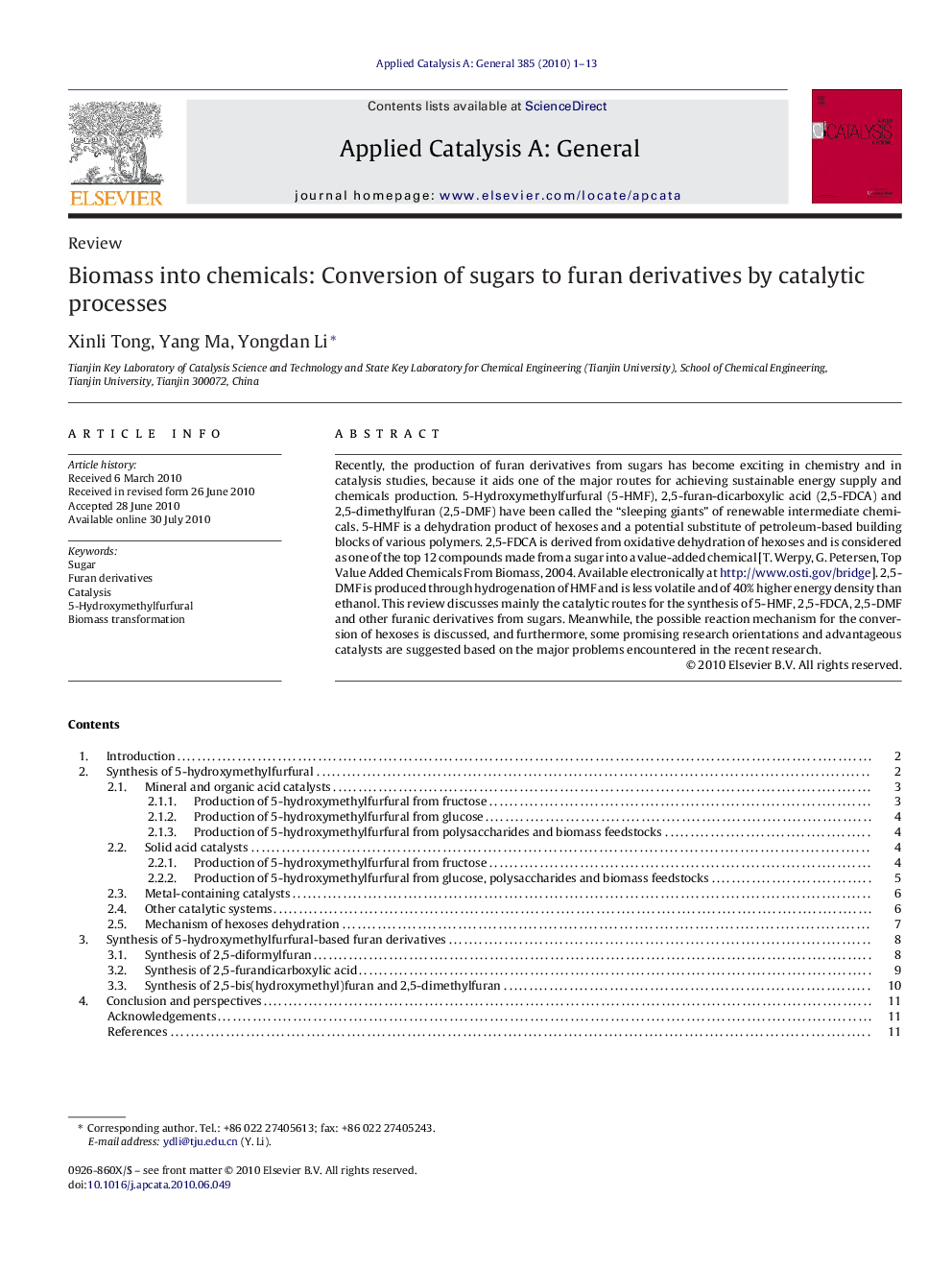| Article ID | Journal | Published Year | Pages | File Type |
|---|---|---|---|---|
| 41962 | Applied Catalysis A: General | 2010 | 13 Pages |
Recently, the production of furan derivatives from sugars has become exciting in chemistry and in catalysis studies, because it aids one of the major routes for achieving sustainable energy supply and chemicals production. 5-Hydroxymethylfurfural (5-HMF), 2,5-furan-dicarboxylic acid (2,5-FDCA) and 2,5-dimethylfuran (2,5-DMF) have been called the “sleeping giants” of renewable intermediate chemicals. 5-HMF is a dehydration product of hexoses and a potential substitute of petroleum-based building blocks of various polymers. 2,5-FDCA is derived from oxidative dehydration of hexoses and is considered as one of the top 12 compounds made from a sugar into a value-added chemical [T. Werpy, G. Petersen, Top Value Added Chemicals From Biomass, 2004. Available electronically at http://www.osti.gov/bridge]. 2,5-DMF is produced through hydrogenation of HMF and is less volatile and of 40% higher energy density than ethanol. This review discusses mainly the catalytic routes for the synthesis of 5-HMF, 2,5-FDCA, 2,5-DMF and other furanic derivatives from sugars. Meanwhile, the possible reaction mechanism for the conversion of hexoses is discussed, and furthermore, some promising research orientations and advantageous catalysts are suggested based on the major problems encountered in the recent research.
Graphical abstractFigure optionsDownload full-size imageDownload high-quality image (54 K)Download as PowerPoint slideResearch highlights▶ Biomass is a promising alternative for the sustainable supply of chemicals. ▶ Furan derivatives can be produced through catalytic conversion of sugars. ▶ 5-Hydroxymethylfurfural, 2,5-furandicarboxylic acid and dimethylfuran are useful. ▶ The catalyst design and catalytic pathways are discussed.
